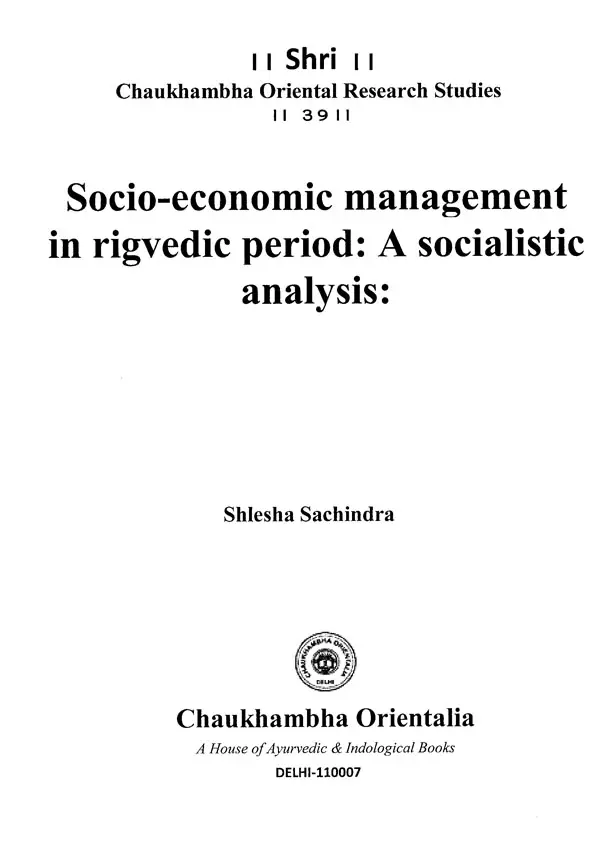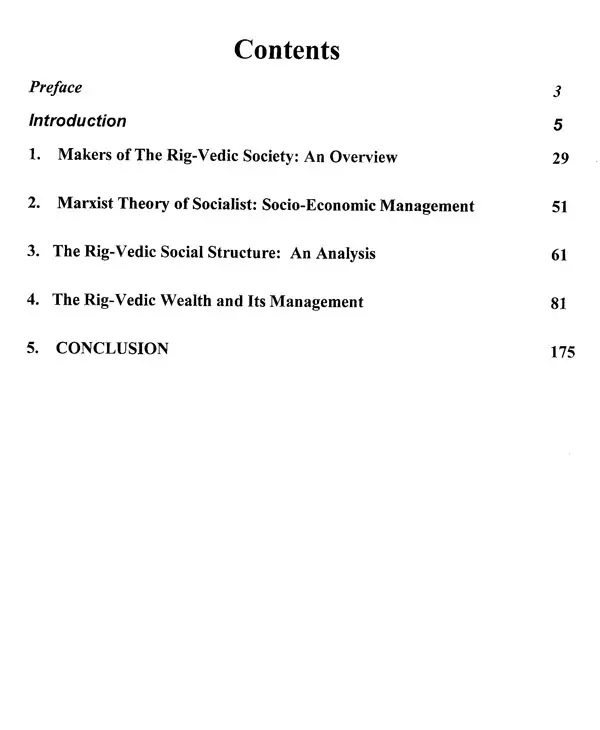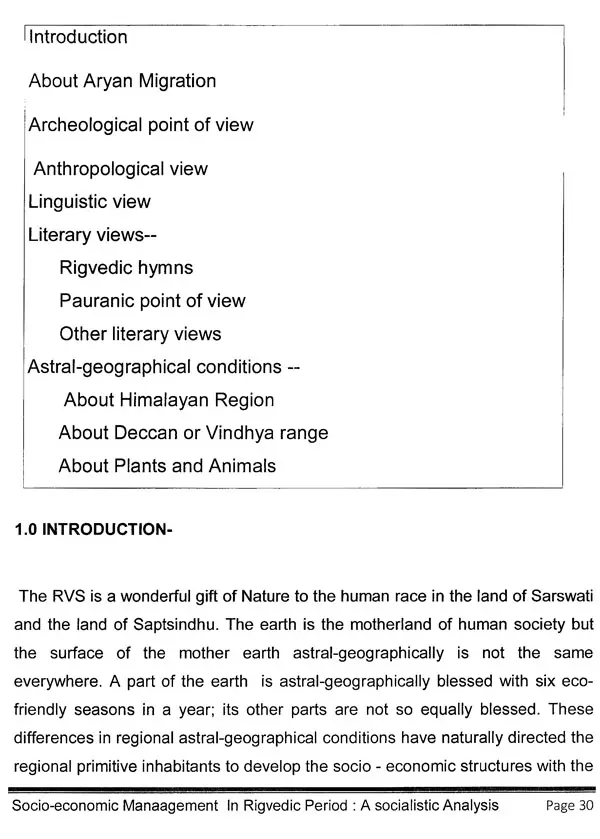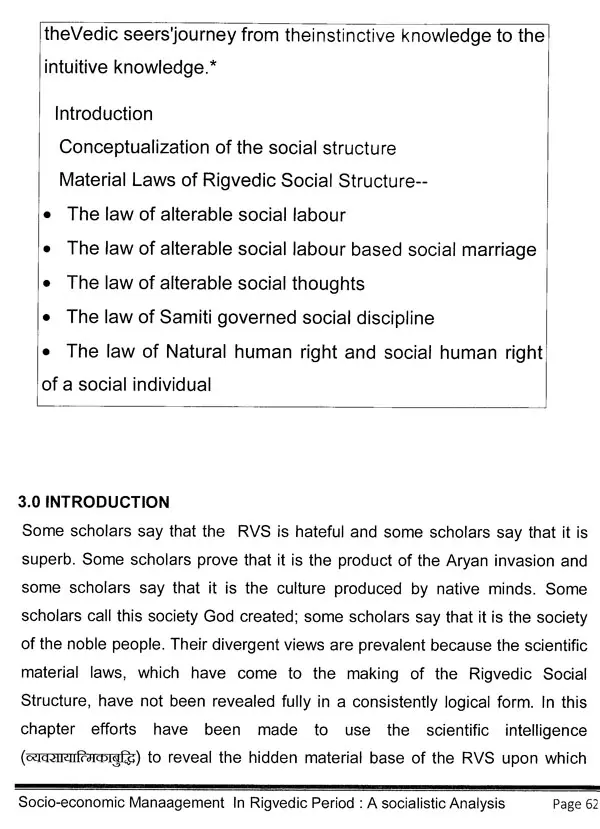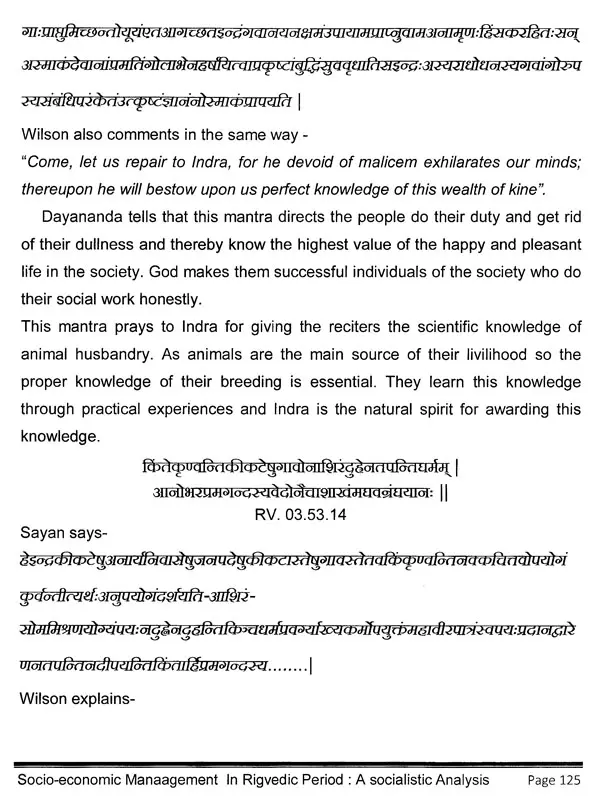
Socio-Economic Management in Rigvedic Period A Socialistic Analysis
Book Specification
| Item Code: | UAO815 |
| Author: | Shlesha Sachindra |
| Publisher: | CHAUKHAMBHA ORIENTALIA, Delhi |
| Language: | Sanskrit and English |
| Edition: | 2022 |
| Pages: | 191 |
| Cover: | PAPERBACK |
| Other Details | 9.50 X 7.00 inch |
| Weight | 360 gm |
Book Description
This book tries to show the incredible sustainable flow of Indian identity, in the field of social-economic management. "devabhagam yathapurve snjanana upasate" RV. 10.191.2". The Rigvedic hymn illustrates the natural resources of wealth -Fire, Air, Water, Earth and sky etc. these immortal forces of Nature, dialectically self-disciplined, collectively creates life-givingmaterials. They provide the daily renewable materials of food in abundance and other necessary things needed for the well born (sujat) of primitive Indians in the land of Sarswati and the seven rivers. The well-born primitive Indians invest mere supervision and elementary care in the form of their collective labour to transform the natural raw materials into the useful wealth means their daily sustenance.
The great difficulty, the research work generates, is the fear whether the thesis, grounded on the ancient Indian methodology, that is supposed to be out of practice, will get the sympathetic consideration of the adjudicators or not. If this thesis succeeds in attracting the kind attention of the august scholars, the old Indian tradition of understanding the world will revive and Indological researchers will get revitalised material life. It will pave the new way to change the capitalist globalization into the socialist globalization without conflict of cultures or without fear of atomic holocaust.
The second difficulty, which the thesis faces in analyzing the socialist SEM of RVS, lies in scrutinizing and selecting the meanings of words in the hymn logically connecting the material structure of the society. The words of the hymns have been reformed, refined, deformed and interpolated in course of their long travelling from pre-historical time to the historical time, from their oral birth to their written existence. And, in course of passing through the minds of different interpretors, they have carried the different meanings to suit the passing epochs. All these changes have made the meaning of the words multi layered. The words, which originally have depicted the picture of casteless basic structure of the RVS which has not gone far behind their oral birth, have been made suitable to express the structural ideas of the Caste Society before the advent of the money and market and further ahead the ideas suitable for the hateful Caste-Class social structure after the money and market. These changes have created the great illusion that the basic structural laws of the Rig Vedic social formation, the Caste Social formation and the Caste-Class social formation are the same.
Abstract Up to now the Rigvedic society (RVS) has been exhaustively studied from the soico-culturalpoints of view. This thesis attempts to study the basic socio-economic structure of the RVS. In order to understand the basic and super structures of every social formation, developed in different astral-geographical conditions of the earth, universal material structural laws have been brought to light consistently in logical form in this thesis. The universal structural laws, operating in different ways in different social formations, developed under different astral-geographical conditions, have been logically revealed for a clear understanding of the Rigvedic socio-economic formation. This thesis attempts to prove the facts that astrai-geographical conditions provide the basic resources which inspire the human endeavours to lay down the socio-economic foundation upon which are erected the super politico-cultural structures of a society. The most primitive Rigvedic socialist socio-economic formation has been substantiated by the most modern scientific theory of global socialism propounded through Marxism. In order to prove the materiality of the socialist socio-economic formation of the RVS, more than six hundred mantra have been analyzed and interpreted in light of the logic adopted for the socio economic study of the RVS. In order to show the difference between the socio-cultural and the socio-economic understandings of the RVS, the views and opinions of the past and the present authorities on the subject have been relevantly quoted. The thesis has the intention to trace evidences to justify the central hypothesis that the Rigvedic Socio-Economic Management (SEM) is a natural socialist one in letter and spirit. This introductory chapter has the following points and sub points.
**Contents and Sample Pages**
